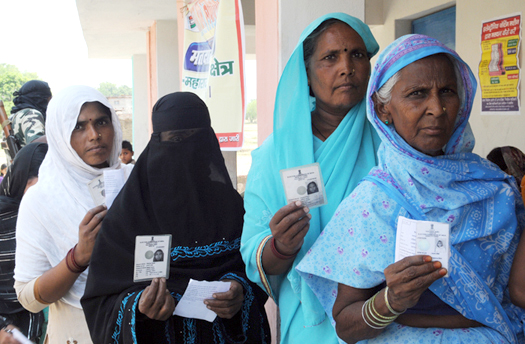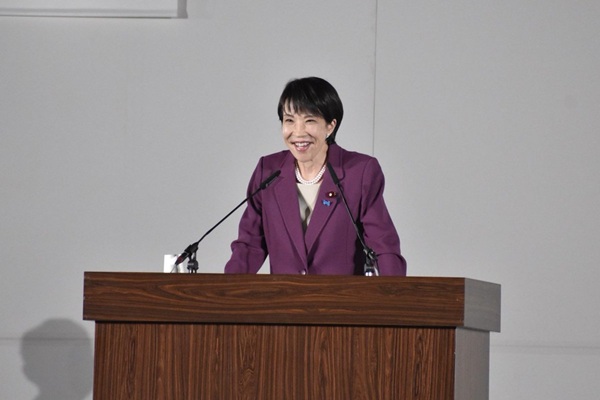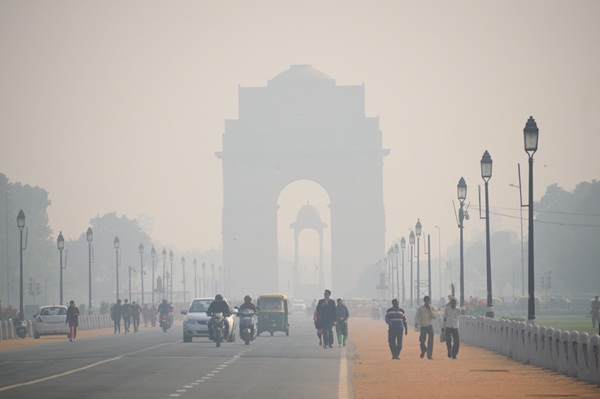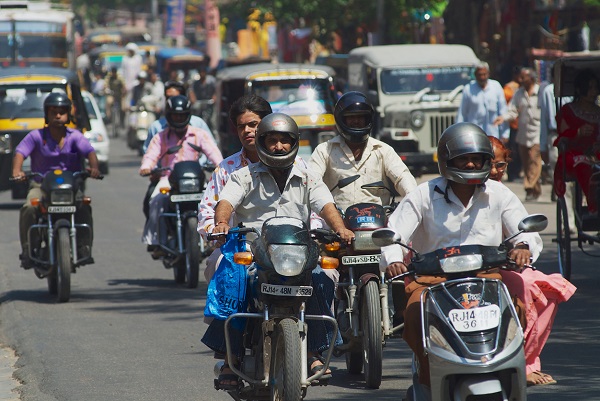.png)
Amitabh Tiwari, formerly a corporate and investment banker, now follows his passion for politics and elections, startups and education. He is Founding Partner at VoteVibe.
November 8, 2025 at 3:06 PM IST
The first phase of Bihar's 2025 assembly elections over 121 seats has produced a remarkable statistic that has set political circles abuzz: a voter turnout of 64.66%, surpassing all previous records in the state's electoral history. This unprecedented participation has triggered intense debate about the signals for the electoral outcome, a pro- or an anti-incumbency vote, and the underlying political currents shaping Bihar's democratic landscape.
Breaking Records
The granular data reveals fascinating patterns. Of the 121 seats that went to polls in Phase 1, turnout declined in 22 constituencies while increasing in 99. This distribution itself tells a story about differential mobilisation across the state. Where turnout declined, the Mahagathbandhan (MGB) had won 15 seats in 2020 compared to the National Democratic Alliance's (NDA) seven victories. Conversely, in constituencies with increased turnout, in 2020, the NDA had captured 51 seats against MGB's 47, suggesting a possible correlation between higher participation and NDA performance.
The Candidate Factor
Perhaps the most crucial piece of missing data is the gender-wise breakdown of turnout. Bihar has established a consistent pattern over the last three elections where women's turnout has exceeded men's by 3-5 percentage points. This trend has profound implications for electoral outcomes, particularly for the Janata Dal (United).
|
Turnout (TO) across last 5 State Elections |
|||||
|
Gender |
2005 (Feb) |
2005 (Oct) |
2010 |
2015 |
2020 |
|
Male |
49.9% |
47.0% |
51.1% |
53.3% |
54.4% |
|
Female |
42.5% |
44.4% |
54.4% |
60.5% |
59.7% |
|
Excess of Female over Male |
-7.4% |
-2.6% |
3.3% |
7.2% |
5.3% |
|
Source: ECI |
|||||
JDU has demonstrated an extraordinary strike rate of 70-90% in constituencies where women outvoted men. The numbers are compelling: 37 out of 43 such seats in 2020, 61 out of 71 in 2015, and an impressive 79 out of 115 in 2010. In the 2020 elections, women outvoted men in 167 seats, and JDU led NDA won 99 of these constituencies. If the 2025 elections continue this pattern with even higher female participation, it could significantly advantage the NDA, given JDU's alliance position.
As per a C-Voter analysis female turnout in this election is around 8 percentage points higher than male turnout. The inverse scenario—higher male turnout—could potentially favour the MGB. In 2020 on 76 seats where men outvoted women, MGB had won 49 seats. Without the Election Commission's official gender-wise figures, any definitive conclusion remains speculative. However, given Bihar's recent voting patterns, higher overall turnout likely indicates stronger female participation, fuelled by the ₹10,000 income support scheme to 15 million women, which historically has benefited the NDA.
|
NDA Won More Seats in High Female Turnout Seats in 2020 |
|
|
NDA |
No. of Seats |
|
BJP |
55 |
|
JDU |
37 |
|
VIP |
4 |
|
HAM |
3 |
|
TOTAL |
99 |
|
NDA |
No. of Seats |
|
RJD |
45 |
|
INC |
8 |
|
LEFT PARTIES |
8 |
|
TOTAL |
61 |
|
OTHERS |
No. of Seats |
|
AIMIM |
5 |
|
IND |
1 |
|
LJP |
1 |
|
TOTAL |
7 |
|
Source: ECI |
|
The Incumbency Paradox
High voter turnout has historically been indicative of both pro-incumbency and anti-incumbency waves. The seeming contradiction resolves when we understand that elevated participation primarily reflects successful mobilisation and voter engagement rather than a specific directional preference.
Consider these examples: the 2014 Modi wave in India saw high turnout driven by anti-incumbency sentiment. The 2019 elections maintained high turnout but represented pro-incumbency for the Modi led NDA government. Paradoxically, the 2024 elections showed lower turnout while still favouring the incumbent, though NDA’s tally declined considerably.
Nitish Kumar's successive victories since 2005, though with different partners, achieved on progressively increasing turnouts, demonstrate that high participation can sustain incumbent governments when they maintain voter confidence. The turnout surge, therefore, doesn't automatically spell doom for the ruling dispensation or guarantee their victory—it simply indicates that political mobilization machinery has worked effectively and that voters believe their participation matters. Each alliance supporter feels they have a chance to win.
By contrast, low voter turnout generally signals pro-incumbency, though for different reasons. When participation drops, it often indicates that voters are not sufficiently motivated to unseat the incumbent, or conversely, that they lack faith in the opposition's ability to provide a viable alternative. Gujarat's 2017 and 2020 elections exemplify this pattern, where relatively lower turnouts accompanied incumbent victories for the BJP.
Debunking the Deletion Myth
Even accounting for the deletions in SIR, turnout would have increased by roughly four percentage points without any deletions. The surge in participation is genuine and reflects actual voter engagement rather than statistical manipulation through roll adjustments.
Ultimately, the record turnout in Bihar's 2025 elections Phase 1 reveals several truths about the state's democratic health. First, it demonstrates that political parties across the spectrum have succeeded in their mobilization efforts, reaching voters effectively despite logistical challenges. Second, it reflects continued faith in the democratic process among Bihar's electorate—citizens believe their votes matter and can shape outcomes.
However, the critical question—whether this enthusiasm favours change or continuity—remains unanswered until gender-wise and possibly age wise, caste-wise data becomes available. Youth participation data would provide additional insights but is not currently accessible by ECI. What we can say with confidence is that Bihar's voters have sent a clear message: they are engaged, mobilised, and determined to participate in choosing their government.
As subsequent phases unfold and more comprehensive data emerges, analysts will gain clearer insights into whether this turnout surge presages a political transformation or an endorsement of existing governance. For now, the numbers themselves stand as testimony to Bihar's vibrant, if complex, democratic culture—a state where voters turn out in record numbers, defying easy categorisation and keeping political observers guessing until the very end.




